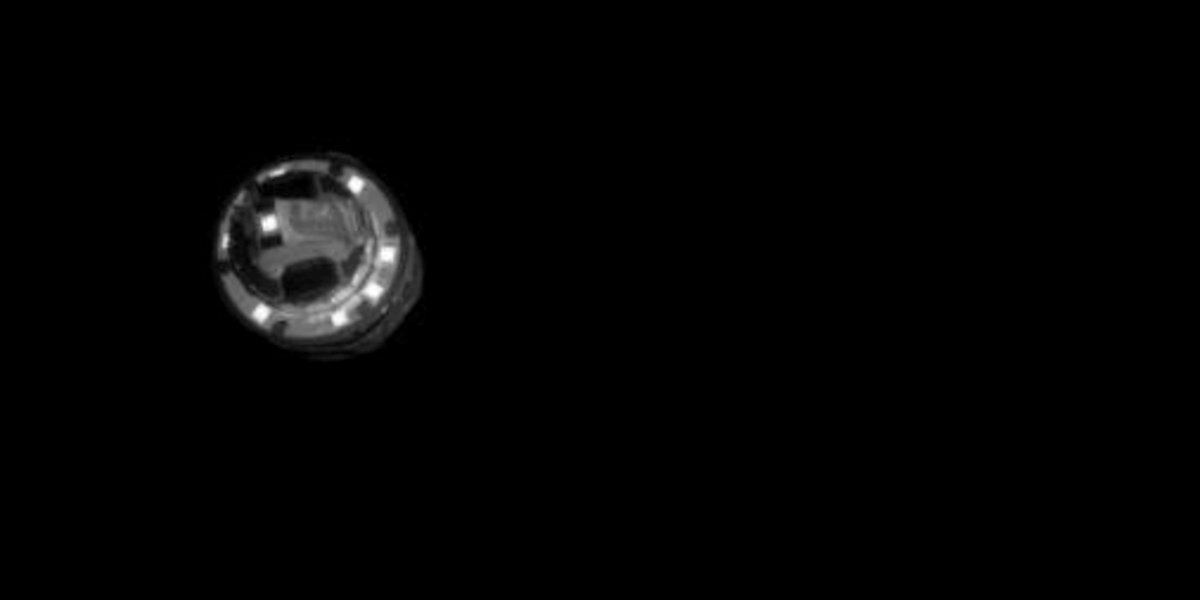- Japan’s space agency, JAXA, said it successfully dropped a small bomb on an asteroid as part of its mission to understand the origins of the solar system.
- The Hayabusa2 spacecraft detonated the explosive onto the Ryugu asteroid on Friday, in an effort to create an artificial crater, JAXA said.
- If all goes to plan, JAXA plans to send Hayabusa2 back to the asteroid later to collect underground samples of water and other organic substances, which could help the agency better understand the history of the solar system.
- Visit Business Insider’s homepage for more stories.
Japan’s space agency said it successfully dropped a small bomb on an asteroid on Friday as part of its mission to better understand the history of the solar system.
The Japan Aerospace Exploration Agency (JAXA) said its Hayabusa2 spacecraft detonated the copper explosive, also known as the Small Carry-on Inspector (SCI), on the Ryugu asteroid on Friday.
The SCI weighs about 2 kg (4.4 lbs) and is the size of a baseball, The Associated Press (AP) reported.
Hayabusa2 released the SCI about 500 meters (1,640 feet) above Ryugu’s surface around 11:13 a.m. Japanese time on Friday, JAXA tweeted.
The goal of the explosion was to create an artificial crater on Ryugu. JAXA is currently examining if or how it managed to create the crater.

A copper plate on the bottom of the ball was expected to turn into a ball as it fell from the spacecraft and slam into Ryugu at 2 km (1.2 miles) per second, the AP said. It was intended to punch a 10 meter (32.8 feet)- wide hole into the asteroid, the BBC reported.
Friday's mission was incredibly risky for Hayabusa2 as it had to immediately move to hide on the other side the asteroid in order to shield itself from any flying debris from the explosion.
JAXA is currently waiting for images of the explosion to transmit back to Earth. It is not entirely clear how long this will take.

If all goes according to plan, JAXA plans to send Hayabusa2 back to the asteroid later, when dust and debris from the explosion settles, the AP said.
The agency hopes to gather underground samples of Ryugu, which could contain organic substances and water that could point to the origins of the solar system, Japan's Kyodo News reported.
It is hoped that Hayabusa2 and the samples it has gather will return to earth by late 2020.

Last September JAXA landed two hopping robots onto Ryugu, also as part of the Hayabusa2 mission - making Japan the first country in the world to land rovers on an asteroid.
Read more: Japanese rovers just transmitted the first photos from an asteroid 280 million kilometres away
Hayabusa2 also successfully touched down on a flat surface on Ryugu in February and collected surface dust and debris.

Markoto Yoshikawa, the mission leader, said according to the AP: "So far, Hayabusa2 has done everything as planned, and we are delighted. But we still have more missions to achieve and it's too early for us to celebrate with 'banzai.'"
"Banzai" is a traditional Japanese exclamation wishing ten thousand years of long life.

